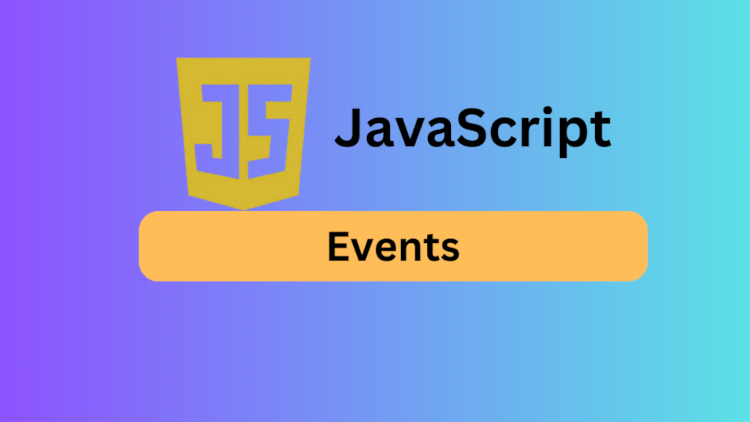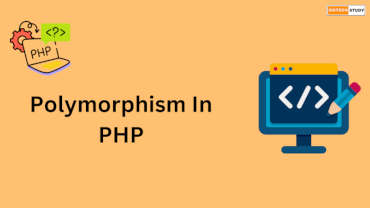
Events are very important feature in JavaScript. It is a user actions (clicks, key press) or system related actions (page loads). Events play a crucial role in modern web development. It gave power to developers to make responsive and interactive user interface. In this article we will learn about JavaScript events & its handling with help of examples.
What are JavaScript Events?
Events that take place on a web page as a result of user interaction or browser activity are known as JavaScript events. Examples of events include:
- Clicking a button
- Pressing a key
- Submitting a form
- Resizing a window
- Loading a page
Web pages can become interactive by allowing developers to design behaviors that react to these actions through events.
Types of JavaScript Events
JavaScript supports various types of events categorized based on their functionality:
1. Mouse Events
When the user interacts with the mouse, we use these type events:
| Events | Description |
| click | It trigger, when an element is clicked |
| dblclick | It trigger, when an element is double-clicked |
| mousedown | It trigger, when a mouse button is pressed. |
| mouseup | It trigger, when a mouse button is released. |
| mousemove | It trigger, when the mouse is moved. |
| mouseenter | It trigger, when the mouse enters an element. |
| mouseleave | It trigger, when the mouse leaves an element. |
2. Keyboard Events
when a user interacts with the keyboard, we use these type events:
| Events | Description |
| keydown | It trigger, when a key is pressed. |
| keypress | It trigger, while a key is pressed (deprecated in modern browsers). |
| keyup | It trigger, when a key is released. |
3. Form Events
when a user interacts with forms, we use these type events:
| Events | Description |
| submit | It trigger, when a form is submitted. |
| change | It trigger, when an input field value changes. |
| focus | It trigger, when an element gains focus. |
| blur | It trigger, when an element loses focus. |
4. Window Events
These type events are triggered by browser window actions.
| Events | Description |
| load | It trigger, when the page fully loads. |
| resize | It trigger, when the window is resized. |
| scroll | It trigger, when the page is scrolled. |
| unload | It trigger, when the user leaves the page. |
5. Clipboard Events
These events handle clipboards related actions like copy, paste, and cut.
| Events | Description |
| cut | It trigger, when content is cut. |
| copy | It trigger, when content is copied. |
| paste | It trigger, when content is pasted. |
6. Drag and Drop Events
These events enable drag-and-drop functionality.
| Events | Description |
| dragstart | It trigger, when dragging starts. |
| drag | It trigger, while dragging. |
| dragend | It trigger, when dragging stops. |
| drop | It trigger, when an element is dropped. |
Also read about JavaScript Popup Boxes
Event Handling
In JavaScript, we handle events by multiple types.
1. Inline Event Handling
It is very simplest way to handle events. Here, we add event directly into HTML elements.
Example
<button onclick="alert('Button Clicked!')">Click Me</button>
In above, we directly add onclick event into button.
Because of maintainability issues, inline event handlers are discouraged despite their ease of usage.
2. Event Properties
Here we use properties to assign event handlers directly to HTML elements.
Example
const button = document.getElementById("myButton");
button.onclick = function() {
alert("Button Clicked!");
};
Above method will overwrite any existing event handlers on the element.
3. addEventListener Method
It is very efficient & recommended approach for handle events by using addEventListener.
Example
const button = document.getElementById("myButton");
button.addEventListener("click", function() {
alert("Button Clicked!");
});
Above method provide more flexibility and also allow to add multiple events on single element.
4. Event Object
Details about the event, including the target element, event type, and other properties, are provided by the event object.
Example
document.addEventListener("click", function(event) {
console.log("Clicked element:", event.target);
});
The event object contains properties like:
- event.target: The element that triggered the event.
- event.type: The type of event.
- event.clientX / event.clientY: Mouse coordinates.
Removing Event Listeners
Event listeners can be removed using removeEventListener.
Example
function handleClick() {
alert("Clicked");
}
button.addEventListener("click", handleClick);
button.removeEventListener("click", handleClick);
Best Practices for Event Handling
- Always use addEventListener instead of inline handlers.
- Avoid memory leaks by removing unnecessary event listeners.
- Minimize event handlers for performance.
- Utilize event.preventDefault() to stop default actions when necessary.
Conclusion
JavaScript events are essential for developing interactive and dynamic websites. Performance and maintainability can be enhanced by knowing the many kinds of events, how to manage them effectively, and best practices. Gaining expertise in JavaScript events is essential to become a skilled web developer.













